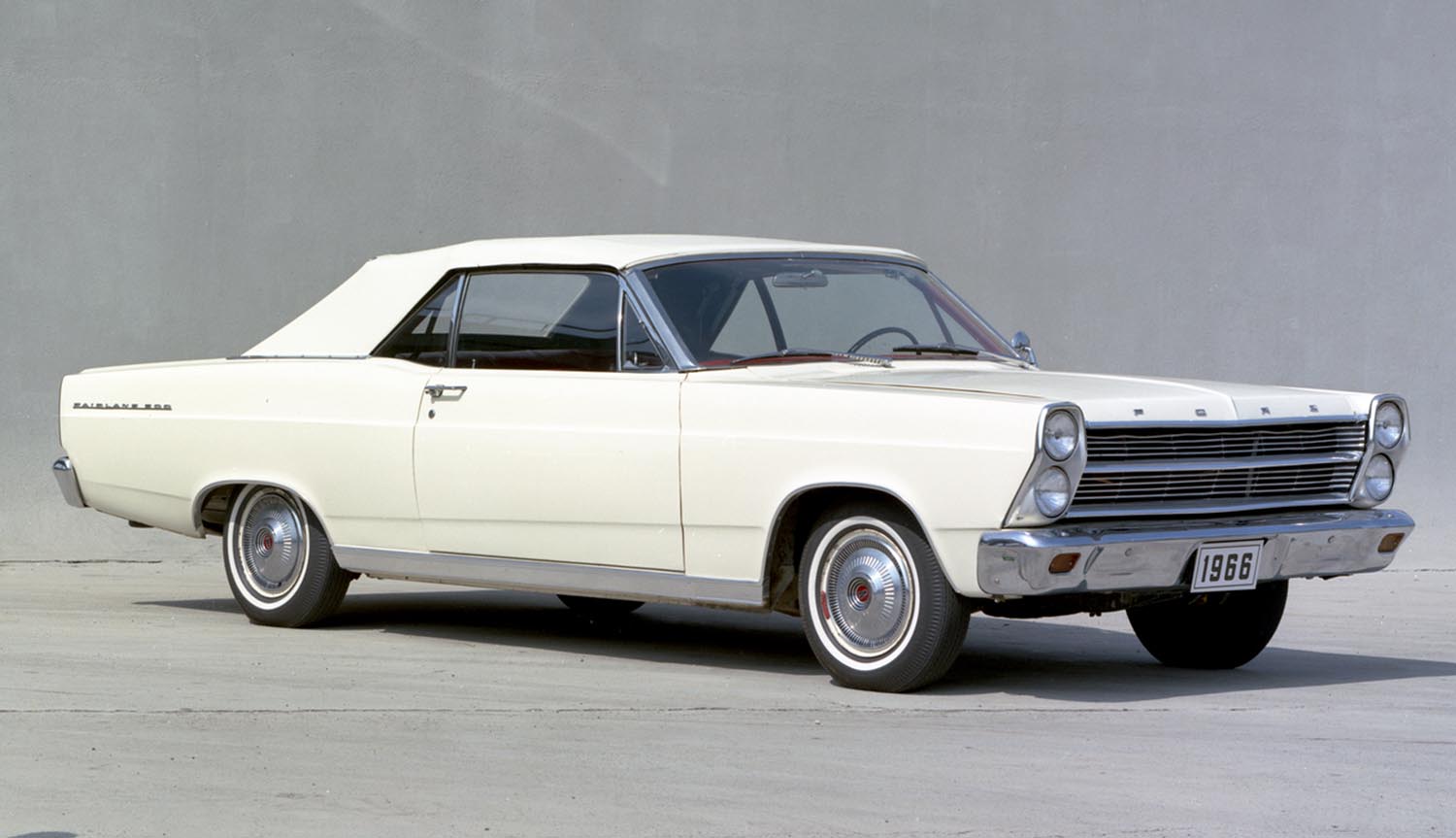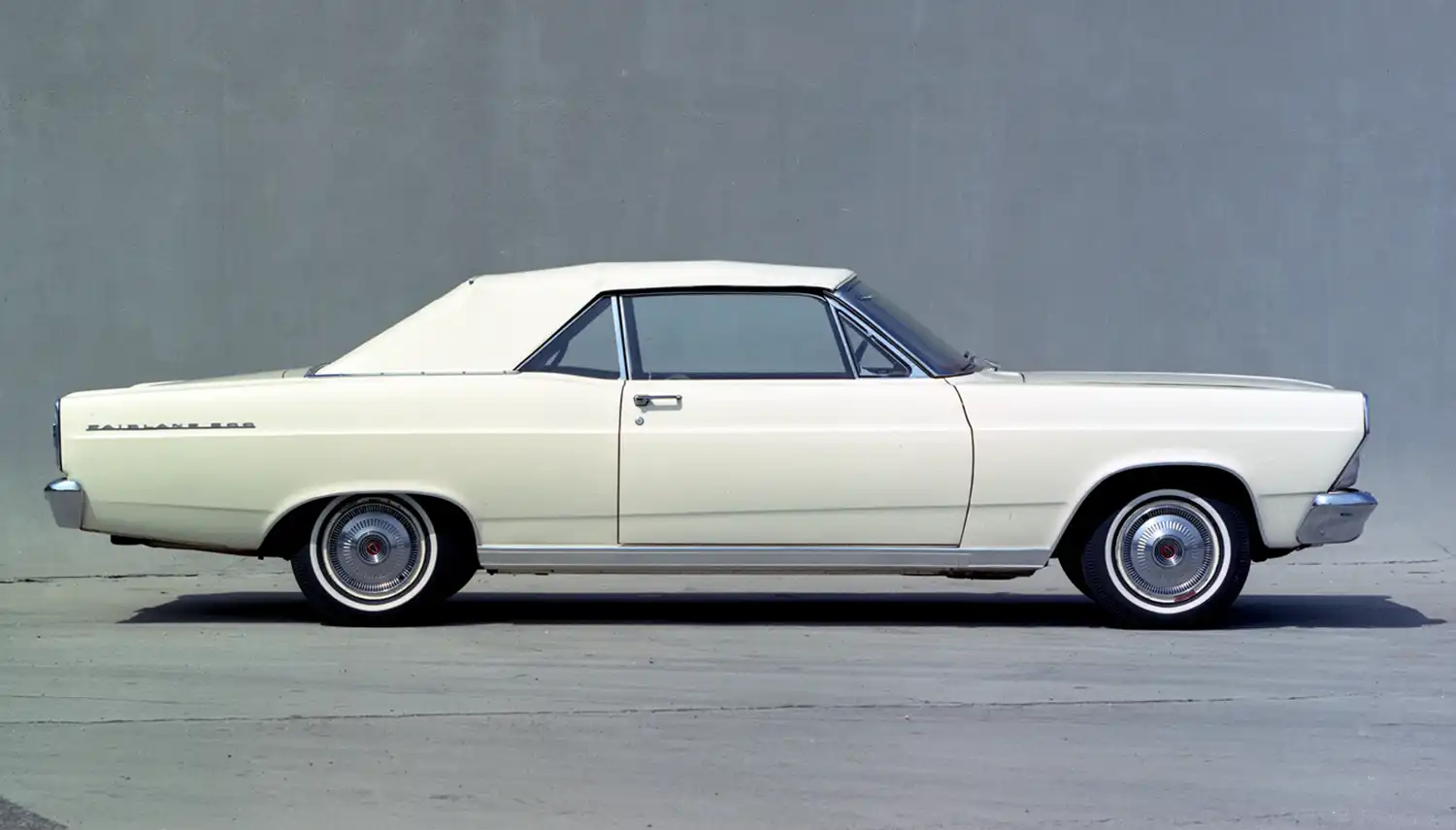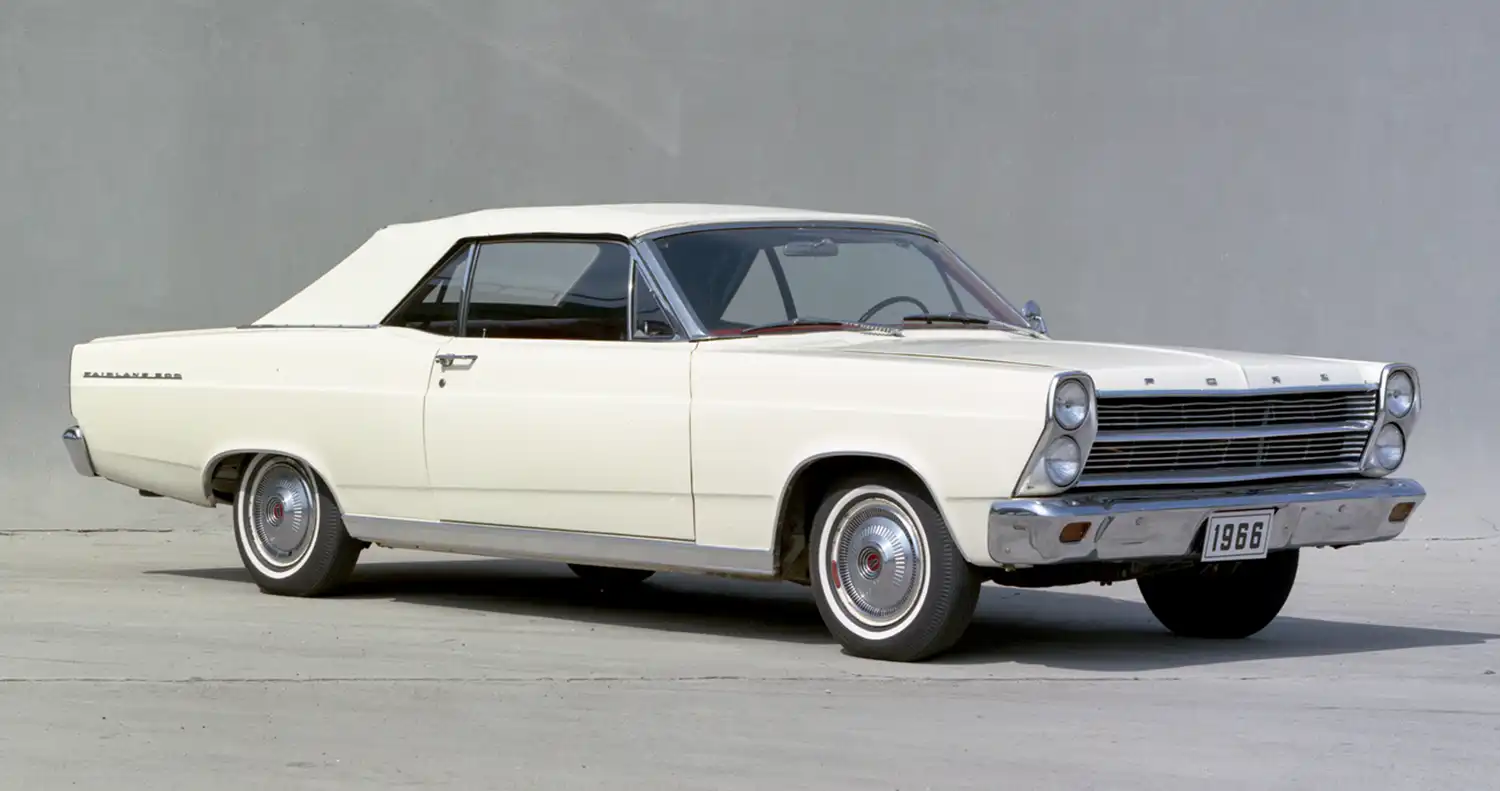
The 1966 Ford Fairlane 500 Convertible remains a standout example of mid-sixties American automotive design. It captures the era’s emphasis on style and open-air driving enjoyment. The fourth-generation Fairlane combined a refined, muscular body with versatile mid-sized dimensions, offering both comfort and practicality. Enthusiasts still appreciate its timeless appeal and distinctive design.
Fourth Generation Design and Styling
The 1966-1967 Ford Fairlane introduced cleaner, more streamlined lines. The convertible body emphasized its sporty yet elegant profile. The Fairlane 500 trim added brightwork and upgraded interior features, creating a premium feel. Its power-operated top folded neatly into a unique trunk design, offering a seamless look. With mid-size proportions, the Fairlane handled better than larger convertibles while maintaining spacious seating for passengers.
Exterior Highlights
The Fairlane 500’s redesigned grille and front fascia conveyed a more assertive presence. Subtle chrome accents highlighted its refined stance, while the convertible silhouette maintained a perfect balance of elegance and sportiness. Tail lights and trim details were updated, giving the car a modernized yet classic appearance.
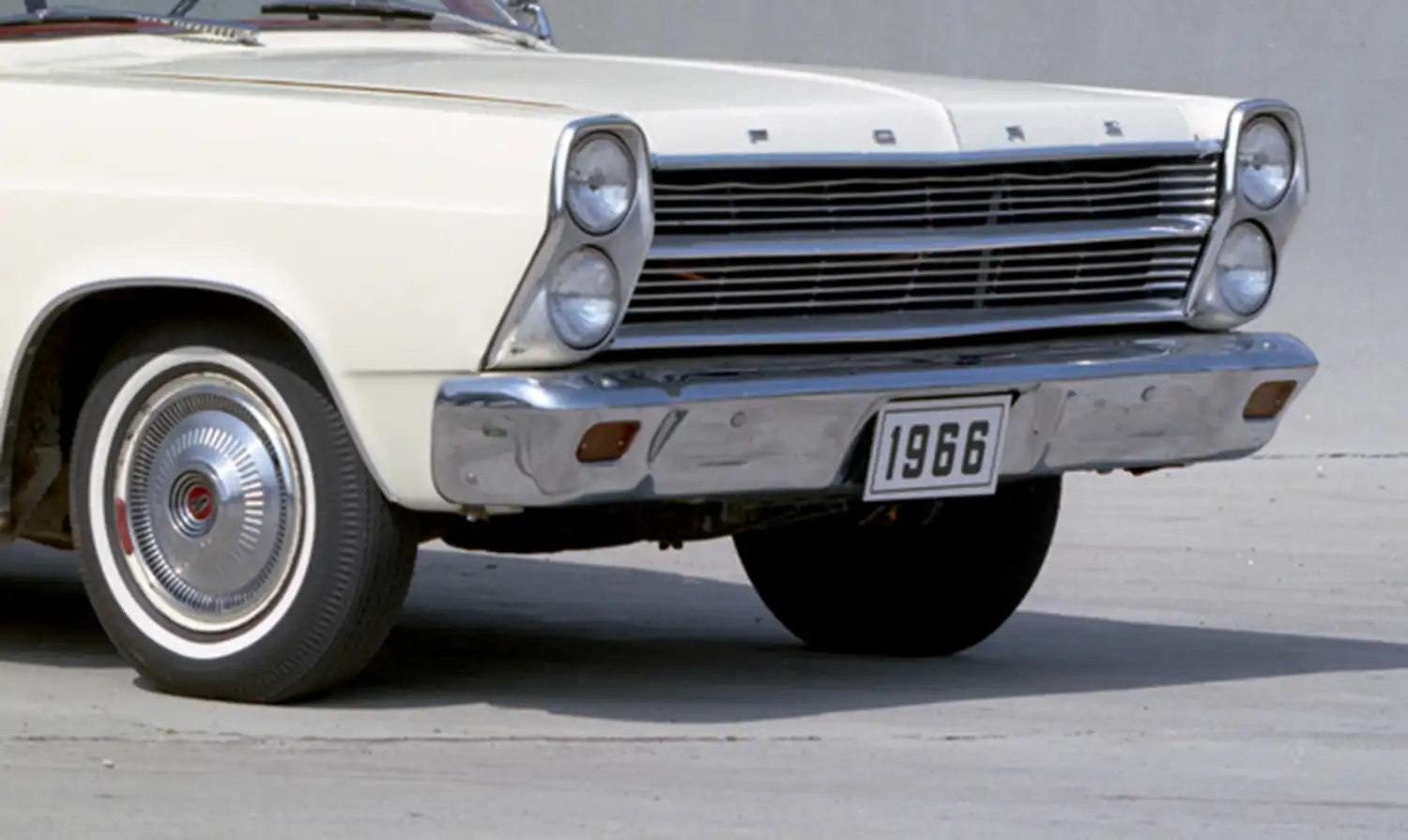
Engine Options and Performance
The 1966 Ford Fairlane 500 Convertible offered a range of engines suited to varying driver preferences. The base inline six-cylinder provided reliable everyday performance. For more spirited driving, buyers could choose from the 289 cubic inch small-block V-8 or the robust 390 cubic inch FE-series V-8. The larger V-8 delivered 325 horsepower and strong torque, making acceleration smooth and lively. Transmission options included a three-speed manual, a four-speed manual for a sportier feel, or the Cruise-O-Matic automatic for effortless cruising. This versatility ensured the Fairlane could satisfy both casual drivers and enthusiasts seeking muscle-car thrills.
Driving Dynamics
The Fairlane’s suspension struck a balance between comfort and performance. Its softly sprung design absorbed road imperfections, making long drives enjoyable. Handling was confident for a mid-sixties convertible, and the available V-8 engines added ample power to complement its refined ride quality.
Interior Comfort and Features
The 1966 Fairlane 500 Convertible cabin focused on comfort and usability. Optional front bucket seats with a center console gave a sportier feel, while the vinyl upholstery offered a variety of colors. Controls were logically arranged, and the wraparound dashboard provided a clear, functional layout. Available features included power windows, air conditioning, heater, defroster, and an AM radio. The interior combined practicality with open-air enjoyment, creating a classic convertible experience for all passengers.
Luxury Meets Function
Interior details balanced style and utility. Spacious seating, intuitive controls, and thoughtful options contributed to a premium feel. The convertible setup enhanced the sensation of freedom, making it ideal for cruising sunny roads or weekend drives.
Enduring Legacy
The 1966 Ford Fairlane 500 Convertible marks the culmination of its generation. It represents the blend of mid-sized versatility, open-air motoring, and powerful V-8 performance. Its design, comfort, and range of engine options continue to make it a favorite among collectors. The Fairlane 500 remains a true icon of mid-sixties personal luxury and convertible culture.
Summary
The 1966 Ford Fairlane 500 Convertible represents the culmination of its generation, offering a stylish mid-sized convertible with a power-operated top. The Fairlane 500 trim added premium features, while engine choices ranged from an inline six to V-8s including the 289 and 390 cubic inch options. Transmission options included three-speed and four-speed manuals, as well as the Cruise-O-Matic automatic. The interior featured optional bucket seats, a center console, and a variety of luxury options, combining comfort, performance, and open-air motoring in a classic mid-sixties package.
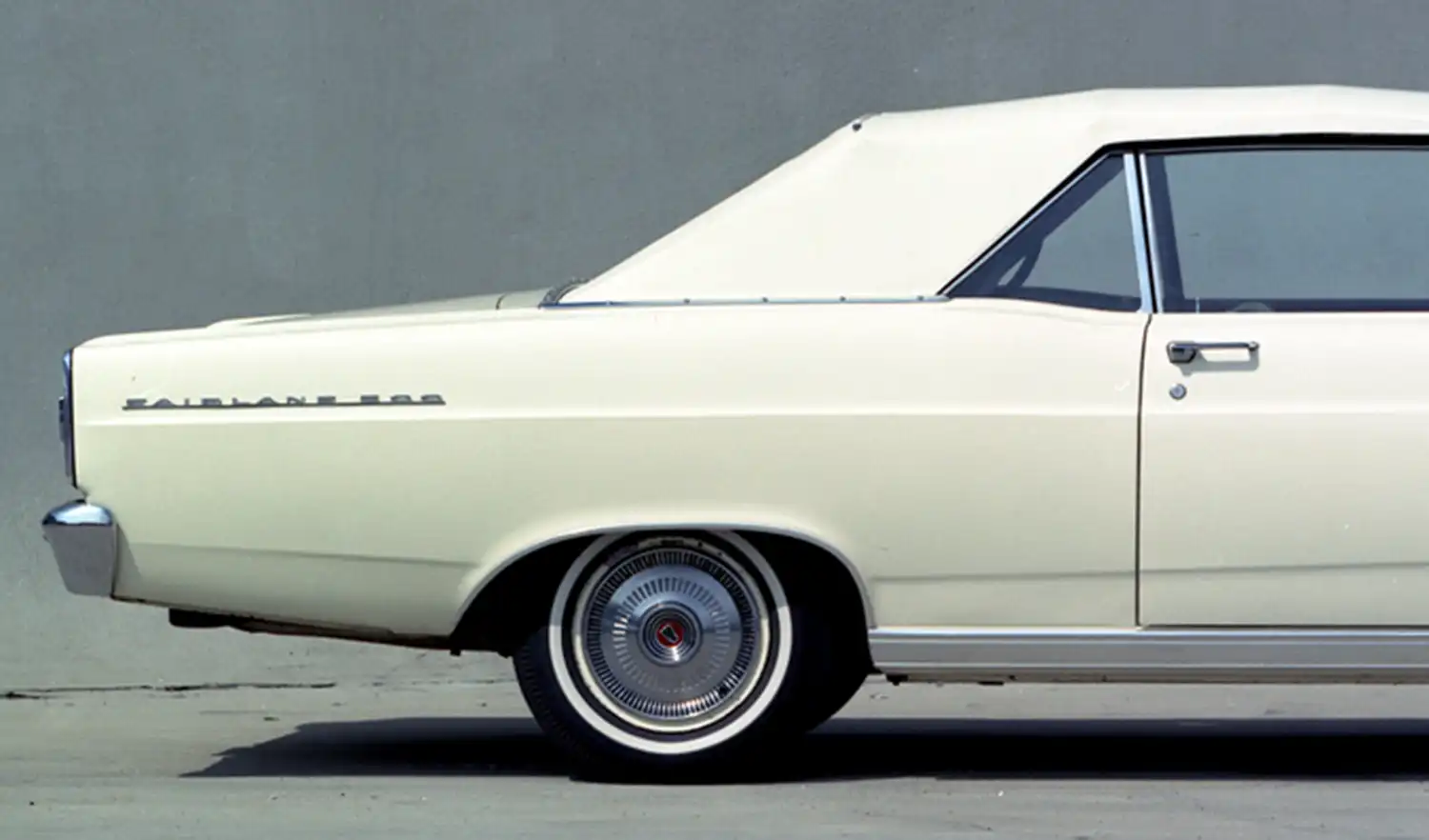
Disclaimer: Information provided is based on general automotive knowledge and historical data. Specific features and specifications may have varied based on production and options. Consult reliable historical sources for precise details.
Source: Ford Heritage Vault
